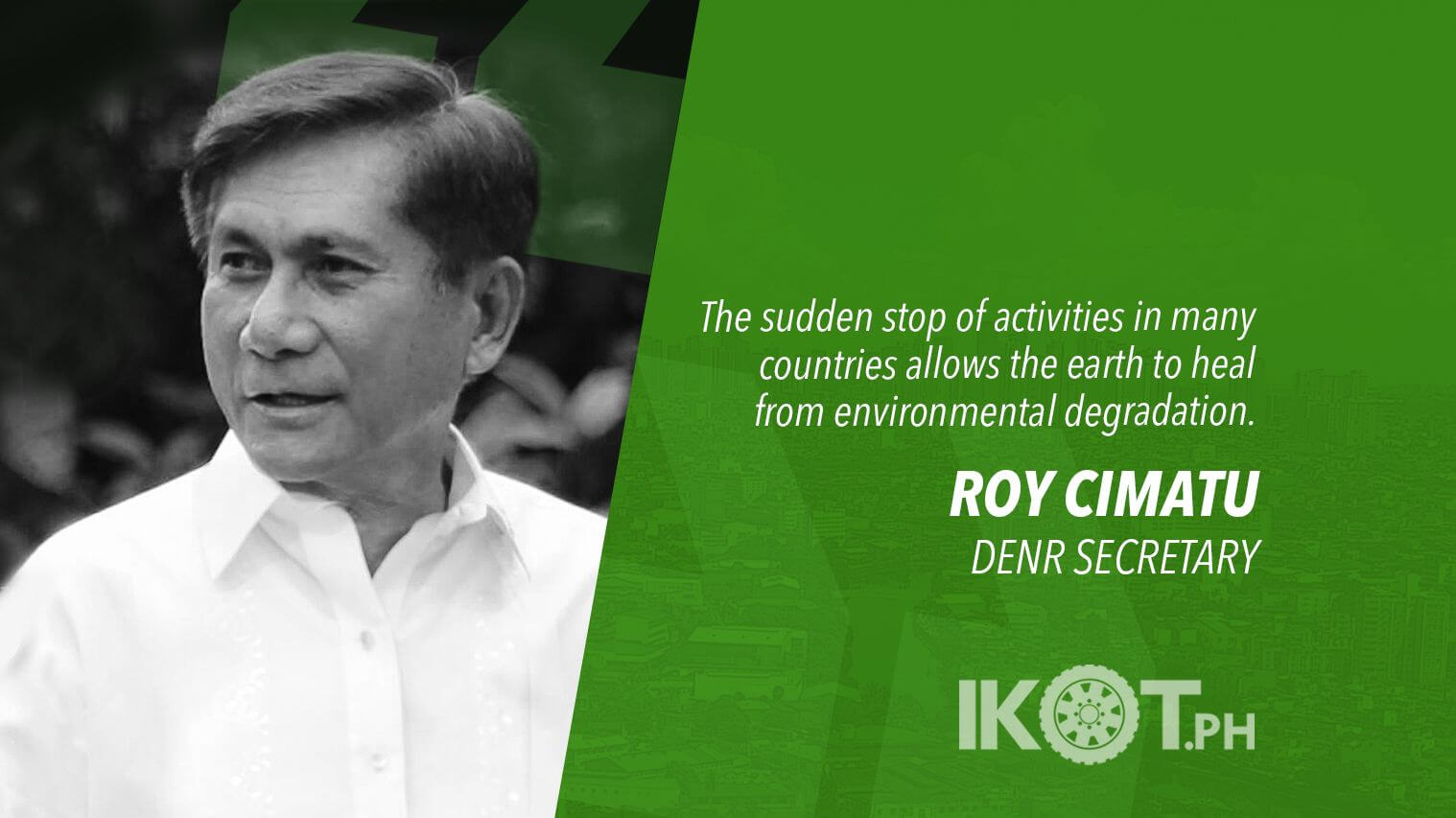With Metro Manila under enhanced community quarantine to contain the spread of the coronavirus disease 2019 (COVID-19), air quality in the metropolis has significantly improved in recent days.
This was reported by the Department of Environment and Natural Resources (DENR) based on air pollution levels registered at their various air quality monitoring stations in Metro Manila.
On March 14, 2020, President Rodrigo Duterte ordered the enforcement of a community quarantine in Metro Manila. This was followed by the enhanced community quarantine in Luzon on March 17, 2020. The order banned public transportation in the National Capital Region and restricted the movement of the population except for front liners and those delivering vital services.
The Air Quality Information System of the DENR-Environment Management Bureau (EMB) showed a significant drop in the concentration of Particulate Matter (PM) in Metro Manila’s air quality based on the results gathered from air monitoring stations in the cities of Las Piñas, Marikina, Muntinlupa, and Parañaque.
On March 22, 2020, the 24-hour average level for PM10 (particles with a diameter of 10 micrometers or fine particles) in Las Piñas and Marikina went down to 31.67 and 27.21 micrograms per normal cubic meter (ug/Ncm) from a high 57.81 and 31.28 ug/Ncm, respectively, on March 9, 2020. The acceptable threshold standard level of PM 10 is 60 ug/Ncm.
Based on DENR Administrative Order No. 2013-13, the acceptable limit for PM 2.5 is 50 ug/Ncm for the short term 24-hour average level, and 35 µg/Ncm for the long term one year average level.
In Muntinlupa and Parañaque, PM 2.5 levels on March 22, 2020 were recorded at 10.78 and 14.29 ug/Ncm, respectively – much lower when they were recorded at 28.75 and 27.23 ug/Ncm, respectively, on March 10, 2020.
“This explains why our sky now is clear and looks clean.”
“We can see the drastic drop in numbers of PM 2.5 in Muntinlupa and Parañaque, and the drop in numbers of PM 10 in Las Piñas and Marikina. This explains why our sky now is clear and looks clean,” said DENR Undersecretary Benny Antiporda.
DENR Secretary Roy Cimatu expressed the bright side of the COVID-19 crisis.
“The sudden stop of activities in many countries allows the earth to heal from environmental degradation,” Cimatu said.
“There is lesser trash in public places because people are in strict home quarantine and restaurants are closed.”
“The major cause of climate change- air pollution, due mainly by mass transport energy emissions, is being abated. In the same way, there is lesser trash in public places because people are in strict home quarantine and restaurants are closed,” Cimatu added.
PM 2.5 refers to the diameter in micrometers or micron of the fine mixture of minute solid particles and liquid droplets present in the atmosphere (particles with a diameter of 2.5 micrometers or fine particles).
When inhaled, these can affect the heart and lungs. PM 2.5 particles come from emissions of motor vehicles, fossil fuel power plants, and wood burnings, among others. PM 10 particles meanwhile are typically from emissions of crushing and grinding machines and dust from cemented and dirt roads.
“The COVID-19 pandemic has brought to the fore on a global scale the realization that a country’s economic and socio-political pillars are underpinned by healthy environment,” said Antiporda.
“With Secretary Roy Cimatu at the helm, the DENR shall remain steadfast in doing its avowed task of providing Filipinos with healthy environment, likewise, important updates on crucial environmental concerns, such as clean air, the environment official concluded.

